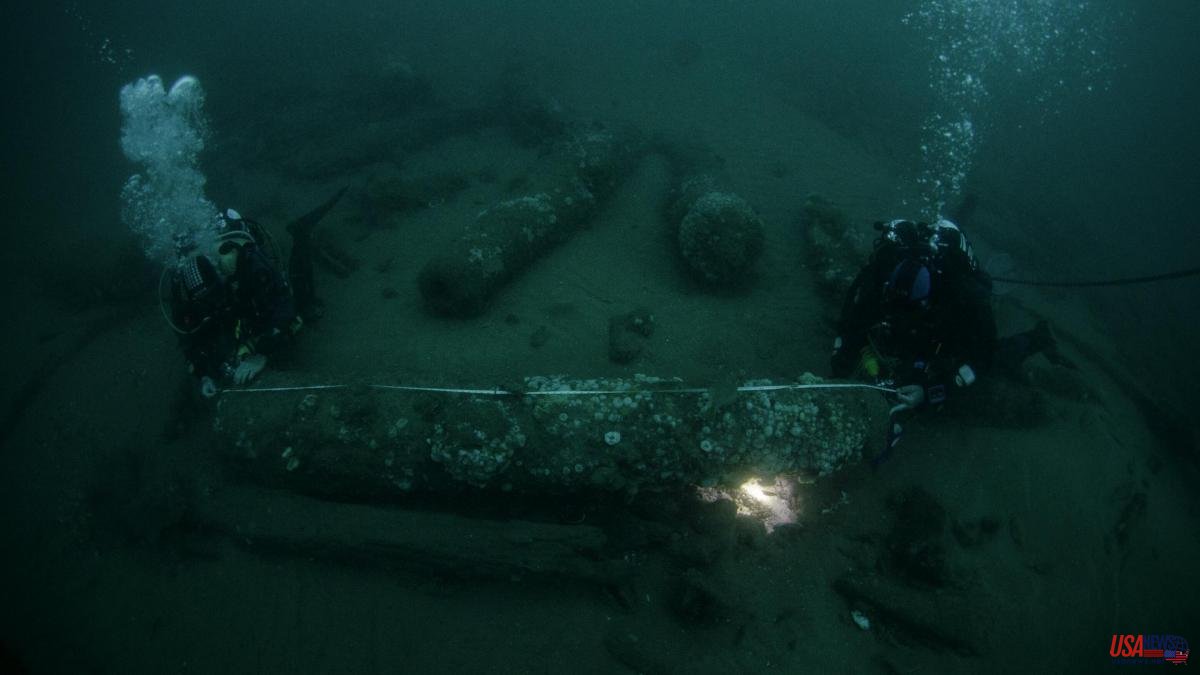The Gloucester was one of the most famous ships of the 17th century. An armed ship that was launched in 1654 and that carried up to 54 cannons on board. After nearly 30 years of service, on May 6, 1682, she ran aground on a sandbar off the Norfolk coast while carrying the future king of England and Scotland, James II.
After 340 years sunk and unaccounted for, brothers Julian and Lincoln Barnwell, along with their friend James Little, a former Royal Navy submariner, found the wreck half buried at the bottom of the sea. Many researchers have already cataloged the find as "the most important maritime discovery since the Mary Rose (Henry VIII's flagship warship)".
The sinking of the Gloucester has been hailed by historians as a "significant moment in British political history." And is not for less. On board the ship was the Catholic heir to the Protestant throne, at a time of high political and religious tension.
Son of Carlos I and Enriqueta María de Francia, Jacobo was the last Catholic monarch to reign over what is now known as the United Kingdom. His reign began in February 1685 and ended only three years later, when the Glorious Revolution forced him to abdicate in favor of her daughter Mary II and her husband, William of Orange, both Protestants.
The Barnwell brothers, who work in the printing industry in Norfolk, spent four years exploring the coastal waters until they found the ship. And now they plan to hold an exhibition in 2023 at the Norwich Castle Museum
"It was our fourth season diving for Gloucester," said Lincoln Barnwell. "We were starting to think we weren't going to find it, because we were diving a lot and we only found sand. But on a descent to the seabed, the first thing I saw was a big canyon on the white sand, it was impressive and really beautiful."
"I immediately felt privileged to be there, it was very exciting. We were the only people in the world at the time who knew where the wreck was. That was special and I will never forget it. Our next job was to identify the wreck. was the Gloucester," he added.
His brother Julian recalled that when they decided to start looking for the ship they had "no idea how important it was in history." "We had read that the Duke of York (the future James II) was on board when it sank, but that That was it. Now we still have a lot of information to gather and we hope that this story will inspire future generations."
The Barnwell brothers found the wreck site in 2007. The Gloucester had a split keel and hull remains submerged in sand. There was also the ship's bell, made in 1681 and which in 2012 allowed the ship to be identified. If it has taken so long to break the news, it was because of the need to protect the site, which is located in international waters.
Artifacts salvaged during the exploration include clothing and shoes, navigational tools and other professional naval equipment, personal possessions, and many bottles of wine. One of them bears a glass seal bearing the coat of arms of the Legge family, ancestors of George Washington, the first president of the United States. That shield was a precursor to the well-known American Stars and Stripes flag.
The Gloucester was commissioned in 1652, built at Limehouse, London, and launched in 1654. In 1682 she was selected to carry James Stuart, Duke of York, to Edinburgh to pick up his pregnant wife and their families. The goal was to bring them back to the court of his brother, King Charles II, in time to attend the birth of a legitimate male heir.
The ship had sailed from Portsmouth, but the Duke and his entourage – who had sailed from London by yacht – boarded off Margate (County Kent). At 5:30 a.m. on May 6, the Gloucester ran aground about 45 kilometers from Great Yarmouth (at the mouth of the Yare River) after a dispute between James - former High Lord Admiral who commanded the British Royal Navy in the second and Third Anglo-Dutch Wars - and the ship's pilot on how to navigate the treacherous sandbanks of Norfolk.
In just one hour, the ship had completely sunk, with the consequent loss of hundreds of crew members and passengers. The Duke barely survived, as he delayed leaving the wreck until the last minute. The Gloucester carried a number of prominent English and Scottish courtiers, including John Churchill, who later became the first Duke of Marlborough.
"Because of the circumstances of her sinking, this may be the most significant historical maritime discovery since the raising of the Mary Rose in 1982," said Professor Claire Jowitt, an expert in maritime history at the University of East Anglia and co-curator of the exposition. "The find promises to change the understanding of the social, maritime and political history of the 17th century," she adds.
"The shipwreck - he concludes - was a tragedy of considerable proportions in terms of loss of life, both privileged and ordinary. That is why the full story of the last voyage of the Gloucester and the impact of its aftermath needs to be remembered. We will also try to establish who died and tell their stories, as the identities of a fraction of the victims are currently known.













